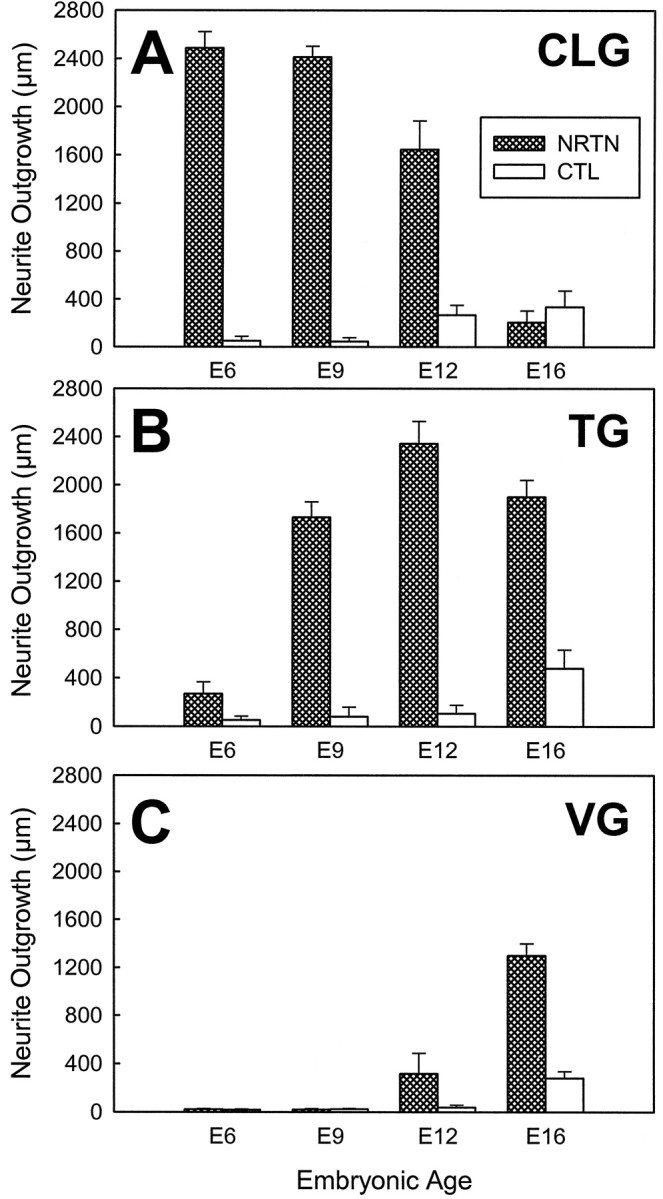Fig. 1.

Changes in the effects of NRTN on neurite outgrowth from cranial ganglion explants during development. Each graph depicts the average length of neurites (± SE) from ciliary (CLG; A), trigeminal (TG;B), and vestibular (VG; C) ganglion explants cultured with NRTN (50 ng/ml for ciliary ganglia and 100 ng/ml for trigeminal and vestibular ganglia) in comparison with control explants cultured in the absence of NRTN; shown after 3 d (E6, E9, E12) or 5 d (E16) of incubation. A, NRTN elicits a neurite outgrowth from E6, E9, and E12 ciliary ganglia, whereas no positive effect was observed from E16 ciliary ganglia.B, NRTN has little effect on E6 trigeminal ganglia but promotes an extensive outgrowth from E9–E16 trigeminal ganglia.C, Unlike ciliary or trigeminal ganglia, vestibular ganglia respond to NRTN only at E12 and E16. n = 9, 6, 9, 6, 6, 12, 7, and 12 (from left, for CLG);n = 8, 6, 11, 6, 8, 11, 6, and 10 (fromleft, for TG); n = 6, 6, 8, 11, 6, 14, 8, and 12 (from left, for VG).
